In this talk, we will discuss leveraging Machine Learning practices in Software Testing with several practical examples and a case study that I used in my project to do Bug Triage. Let's embrace the future together!
The Future is Today: Leveraging AI in Software Testing
Video Summary and Transcription
This Talk discusses integrating machine learning into software testing, exploring its use in different stages of the testing lifecycle. It highlights the importance of training data and hidden patterns in machine learning. The Talk also covers generating relevant code for test automation using machine learning, as well as the observation and outlier detection capabilities of machine learning algorithms. It emphasizes the use of machine learning in maintenance, bug management, and classifying bugs based on severity levels. The Talk concludes with the results of classification and bug management, including the use of clustering.
1. Integrating Machine Learning into Software Testing
In this session, I want to talk about integrating machine learning into our daily software testing activities. We will discuss integrating machine learning activities in different software testing stages. We will start from the first stage in the lifecycle, analyze the requirements, design test cases, implement test code, and discuss maintenance activities. We need to use machine learning to improve our activities due to the complexity of the systems we test, the need to cover different interfaces and integrations, and the time constraints and resource issues we face. Machines and robots can help us, as they already do in our daily lives.
Hello, everybody! My name is Mesut Turkal. I'm a software quality assurance engineer, and in this session, I want to talk about integrating the machine learning into our daily software testing activities.
Machine learning is nowadays a very hot topic, everyone is talking about it, everyone is trying to get advantage to improve their efficiency. So, how about quality assurance activities, right? We can also improve our efficiency, maybe we can reduce some manual tasks, and we can somehow get advantage of using machine learning in our activities in different stages.
So, this is what we will do. We will discuss integrating, or leveraging machine learning activities in different software testing stages. We will start from the first stage in the lifecycle, which is even analyzing the requirements and designing some test cases, and then we will discuss how we can implement test code as well, because test automation is very important, and eventually we will discuss some maintenance activities by the help of machine learning activities. So, this is what we will go through.
First of all, let's have a check about the background and why we need to improve our activities by the help of machine learning. And in the second part of the presentation, this is probably the most important part in which we will go through all stages in the software testing lifecycle, and eventually in the last part I will share one practical example where I tried to use machine learning in my personal project and I will explain what I did and I will share some results. So let's get started with the first part, the introduction part and the needs or the background of using machine learning in software testing.
We need to use machine learning to improve or to support our activities because we have several challenges. Software testing is not easy anymore. The applications the systems that we are testing are too complex, too complicated. We have several interfaces or interactions and the applications that we are testing are talking to, communicating to different applications on different platforms, right? So we have to test or cover different interfaces or integrations. So this means we have a comprehensive scope to test and of course we have a time constraint. Time is precious. It's very valuable. And if our test cases are slowing down the pipelines, then after sometime it won't be acceptable, right? Because the developers or the product managers will start complaining about the test cases, slowly running test cases, because we want to fix our failures or the issues as soon as possible. We want to because this is one of the best deliveries, one of the quality dimensions on top of the quality context.
But to support fast delivery, we have to cope in time. We have to be quickly adapting our solutions. We have to quickly covering a lot of scope and integrations. So we have time constraints, scope resources, of course, budget is all resource issues, mean, cost and the budget issues. So from lots of different dimensions, we have several challenges. So it looks a little bit difficult and tough to cope with this challenge. But maybe we can find some help. We can get some help from someone. And could machines or robots be someone who can help us? Actually, they can because even in our daily routines, daily life, we can see in several different situations, they are already helping us. Even if we are watching over some social media or reading some articles, we are seeing they are recommending us.
2. Machine Learning in Software Testing
In this part, we discuss how machine learning works and its working principle in software testing. We explore the use of machine learning tools, such as natural language processing algorithms, in software testing practices. We also highlight the importance of training data and how hidden patterns are revealed to generate a model for predicting future reactions or results. Additionally, we draw parallels between machine learning and biological learning, emphasizing the need for learning and observation in testing. Finally, we examine the software testing life cycle and the stages involved, from analyzing requirements to executing test cases and performing maintenance.
Like even if I read one article, I see that I might be interested in some more similar articles. And most of the time, it's very accurate, right? How does it work? How do they know me? Like, what kind of scope or context I might be interested in? Because they watch me, they observe me, they already know previously which articles I visited, previously which context I was interested in. And similarly, the prediction would be, what kind of similar scope I could be interested in? So, there is a pattern underlying my actions and when this hidden pattern is revealed after the observation, which is called as learning in machine learning, then of course the future actions would be predicted easily. So this is the working principle of machine learning, right?
So similarly, it can work in our software testing activities as well. For example, when I check what kind of tools are using only the machine learning, those tools which are performing software testing performance, even this query I can make with the help of machine learning. Nowadays, of course all of us know there are several natural language processing algorithms or protocols we can communicate with. So after sending our queries we can find several accurate answers. So not only the NLP protocols or algorithms, but lots of several algorithms we can use in our software testing practices and we will see how fast, how reliable they are working. And one more time let's quickly remind or remember how a dimensional algorithms work. Of course the training data is very important to predict some accurate results because if they don't learn us very well then maybe the results they are generating might not be that accurate or the expected results. So after having enough and accurate consistent data, then after observing this data the hidden patterns are revealed and a model is generated so whenever an upcoming data is coming then this model can generate what, how or in what ways this input data will be reacted. The system will react in what way. This reaction or the result can be predicted by the model and this will be our result and whenever we complete our model we can evaluate the performance and if we are convinced with the performance or satisfied with the performance of the model then we can go and just deploy in production but otherwise we can continuously try to improve by changing by the parameters, by doing some fine tuning activities, by playing with the the optionals or the parameters of the model. So it looks very similar to our biological learning because I tried to give some examples previously in the previous slides, like how we learn some things. Like first of all we observe, we try to learn the whole system how it works and then for the upcoming situations we try to predict what might be the related reactions or the results. For example as a human tester, if you ask me to test your system my answer would be most probably okay if I have resource or bandwidth, of course I can test your system, but first of all please teach me, please let me learn your system, like even if you yourself do not teach me I will learn it by some exploratory activities or by learning the documents going through the materials, I will do the learning, I will observe, I will do some exploratory actions, I will click the buttons, I will maybe navigate to different pages and I will observe, I will see how the system will react to my actions and then eventually after I complete my learning then I can guess what can be the results. For example whenever I see the APIs are working in a secure way then most probably I can guess if I send a request with an unauthenticated tokens or credentials then most probably I will have a 403 response code. This is my prediction right, because I already learned, I already observed the system is working with a secure way. This will work in the same way with the machines and let's see how it works in our software testing life cycles or the stages. This is a very usual life cycle we follow. Of course it's not working in a waterfall way or manner anymore nowadays. It is working like an iterational way, in an agile way. But basically this is how it works, even through the iterations. We start with analyzing the requirements, understanding the features, and then we design some test cases to cover those requirements or the features. Then whenever we design our test cases, we have to execute them. And we can execute either in manual ways or automated ways. So if we are doing the automated testing we should the test code. This is the implementation which is a part of the environment setup stage. After the execution, test case execution is the next after environment setup. And eventually, after the execution, we close our testing activity by doing the maintenance.
Check out more articles and videos
We constantly think of articles and videos that might spark Git people interest / skill us up or help building a stellar career
Workshops on related topic
In this three-hour workshop we’ll introduce React Testing Library along with a mental model for how to think about designing your component tests. This mental model will help you see how to test each bit of logic, whether or not to mock dependencies, and will help improve the design of your components. You’ll walk away with the tools, techniques, and principles you need to implement low-cost, high-value component tests.
Table of contents- The different kinds of React application tests, and where component tests fit in- A mental model for thinking about the inputs and outputs of the components you test- Options for selecting DOM elements to verify and interact with them- The value of mocks and why they shouldn’t be avoided- The challenges with asynchrony in RTL tests and how to handle them
Prerequisites- Familiarity with building applications with React- Basic experience writing automated tests with Jest or another unit testing framework- You do not need any experience with React Testing Library- Machine setup: Node LTS, Yarn
Tests rely on many conditions and are considered to be slow and flaky. On the other hand - end-to-end tests can give the greatest confidence that your app is working. And if done right - can become an amazing tool for boosting developer velocity.
Detox is a gray-box end-to-end testing framework for mobile apps. Developed by Wix to solve the problem of slowness and flakiness and used by React Native itself as its E2E testing tool.
Join me on this workshop to learn how to make your mobile end-to-end tests with Detox rock.
Prerequisites- iOS/Android: MacOS Catalina or newer- Android only: Linux- Install before the workshop
1. Welcome to Postman- Explaining the Postman User Interface (UI)2. Workspace and Collections Collaboration- Understanding Workspaces and their role in collaboration- Exploring the concept of Collections for organizing and executing API requests3. Introduction to API Testing- Covering the basics of API testing and its significance4. Variable Management- Managing environment, global, and collection variables- Utilizing scripting snippets for dynamic data5. Building Testing Workflows- Creating effective testing workflows for comprehensive testing- Utilizing the Collection Runner for test execution- Introduction to Postbot for automated testing6. Advanced Testing- Contract Testing for ensuring API contracts- Using Mock Servers for effective testing- Maximizing productivity with Collection/Workspace templates- Integration Testing and Regression Testing strategies7. Automation with Postman- Leveraging the Postman CLI for automation- Scheduled Runs for regular testing- Integrating Postman into CI/CD pipelines8. Performance Testing- Demonstrating performance testing capabilities (showing the desktop client)- Synchronizing tests with VS Code for streamlined development9. Exploring Advanced Features - Working with Multiple Protocols: GraphQL, gRPC, and more
Join us for this workshop to unlock the full potential of Postman for API testing, streamline your testing processes, and enhance the quality and reliability of your software. Whether you're a beginner or an experienced tester, this workshop will equip you with the skills needed to excel in API testing with Postman.
In the workshop they'll be a mix of presentation and hands on exercises to cover topics including:
- GPT fundamentals- Pitfalls of LLMs- Prompt engineering best practices and techniques- Using the playground effectively- Installing and configuring the OpenAI SDK- Approaches to working with the API and prompt management- Implementing the API to build an AI powered customer facing application- Fine tuning and embeddings- Emerging best practice on LLMOps













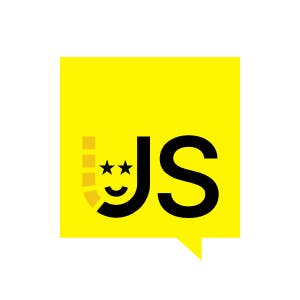




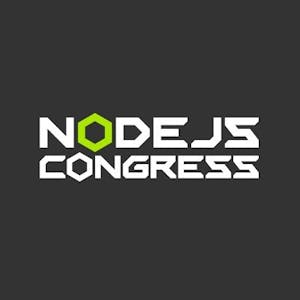
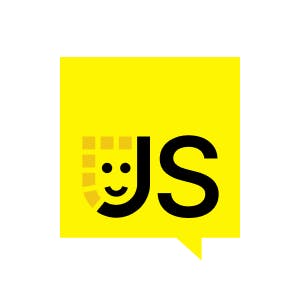


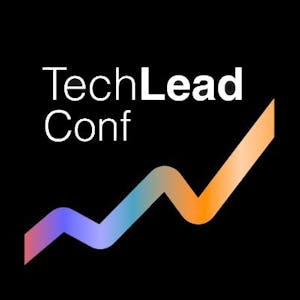
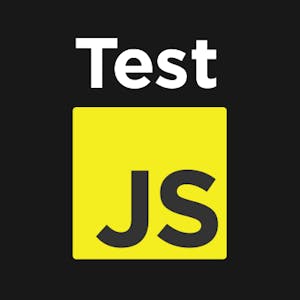
Comments